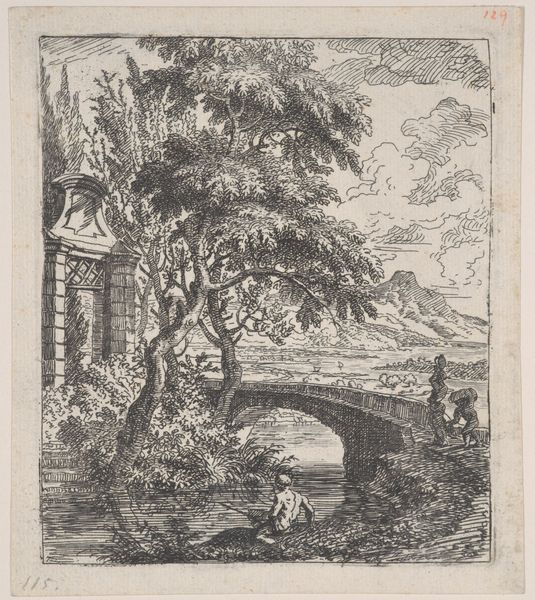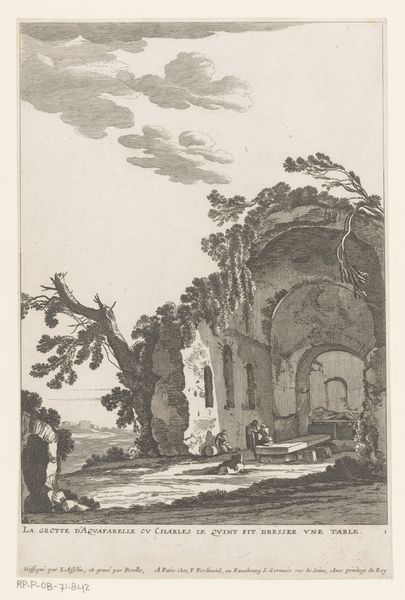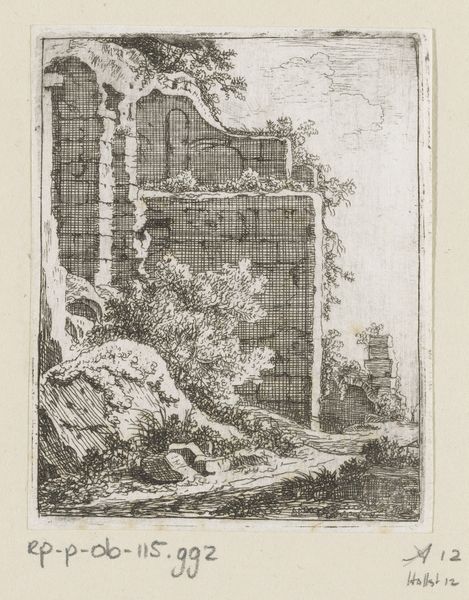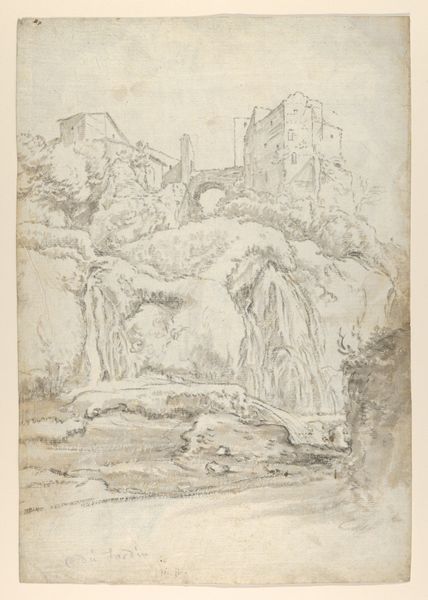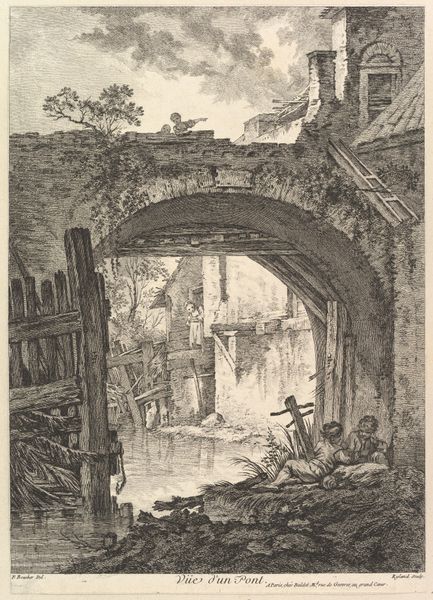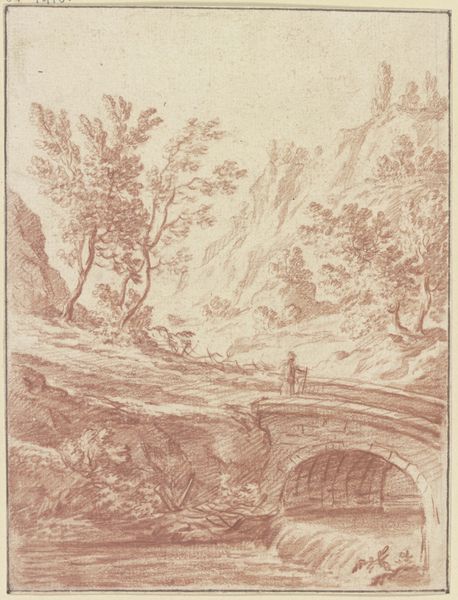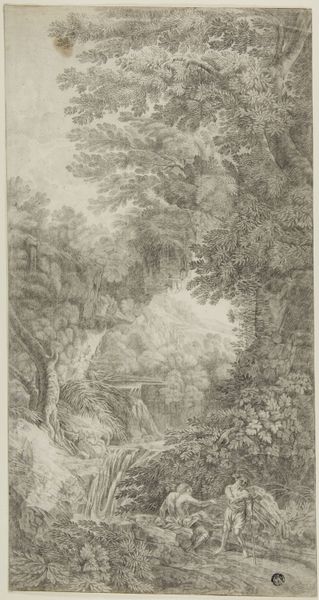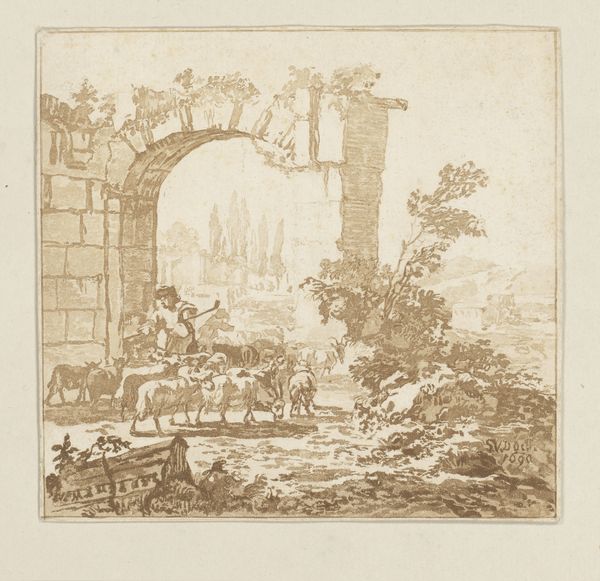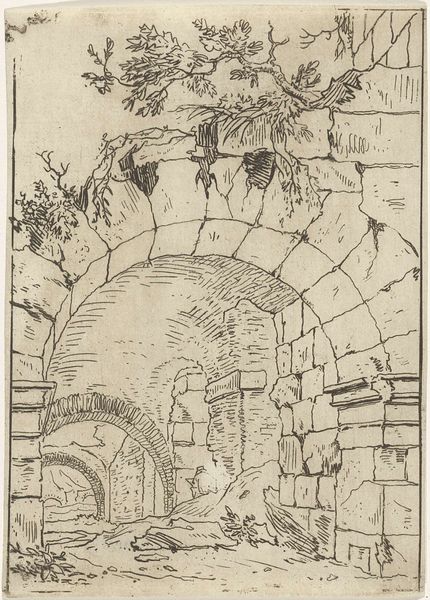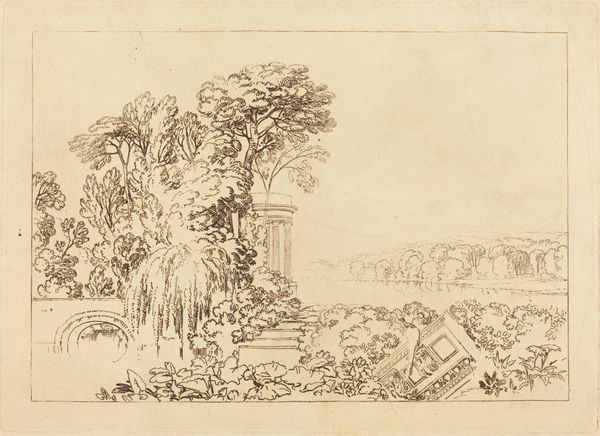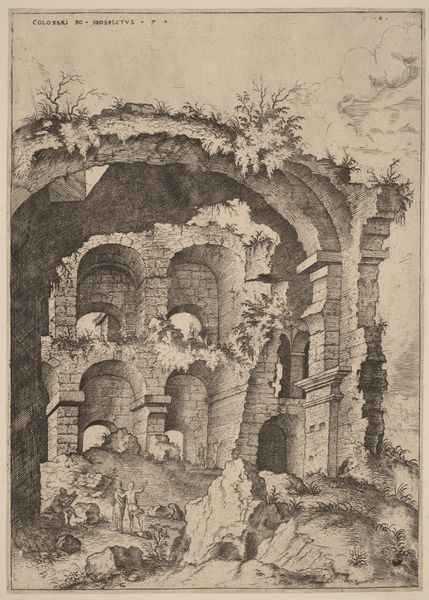
drawing, print, etching, ink
#
drawing
#
baroque
# print
#
etching
#
landscape
#
ink
Dimensions: Sheet: 14 13/16 × 10 1/2 in. (37.7 × 26.7 cm)
Copyright: Public Domain
Curator: Let’s spend some time with "Landscape with Bridge," a captivating etching in ink, made sometime between 1720 and 1765 by Anne Claude Philippe, the Comte de Caylus. It’s currently held at the Metropolitan Museum of Art. Editor: My initial response is…it's strangely dreamlike. The stark lines and somewhat fantastical elements, like the lone figure walking on the distant bridge, create a surreal feeling. It is somehow both calming and unsettling, and reminds me of colonialism, in a sense, although this wasn't necessarily Caylus' goal. Curator: Caylus, an antiquarian, engraver and man of letters, often explored classical themes and subjects, imbuing his works with a blend of historical interest and philosophical reflection. Considering its baroque style, it aligns with a historical impulse of that era to depict nature as both beautiful and allegorical. Editor: Right, the bridge itself can be interpreted. A threshold, of sorts, between one realm of being and another. Those children reclining in the foreground—what's their role in relation to the imposing architectural forms behind them? Their placement really raises questions about innocence, power, and societal legacy. The bridge is a phallic symbol that could be linked with masculinity in a heteronormative society. Curator: I see that. Caylus’s training in classicism definitely informed his approach to landscape. The arrangement—the bridge, figures, the buildings on the second bridge in the back—echoes Roman ruins, framing themes of time and decay but, more broadly, humankind's relationship to its environment. Editor: And in that relationship, consider who is prioritized! Is it not always the aristocratic person in this depiction? Are the two children from an upper-class family, having their nanny guard them? There is some privilege present here. I wonder what narratives we could generate by centering those traditionally pushed to the margins, specifically from a feminist standpoint? What experiences are eclipsed, here? Curator: That kind of inquiry provides us with alternative narratives from works like this. By acknowledging what is omitted, it broadens how we read historical narratives presented by elite circles. This piece exemplifies how art institutions shape knowledge, both affirming and omitting specific cultural voices and socio-political priorities. Editor: Precisely! It's through understanding that complicated process we equip ourselves with tools for creating dialogues around justice, which I think are vital.
Comments
No comments
Be the first to comment and join the conversation on the ultimate creative platform.
